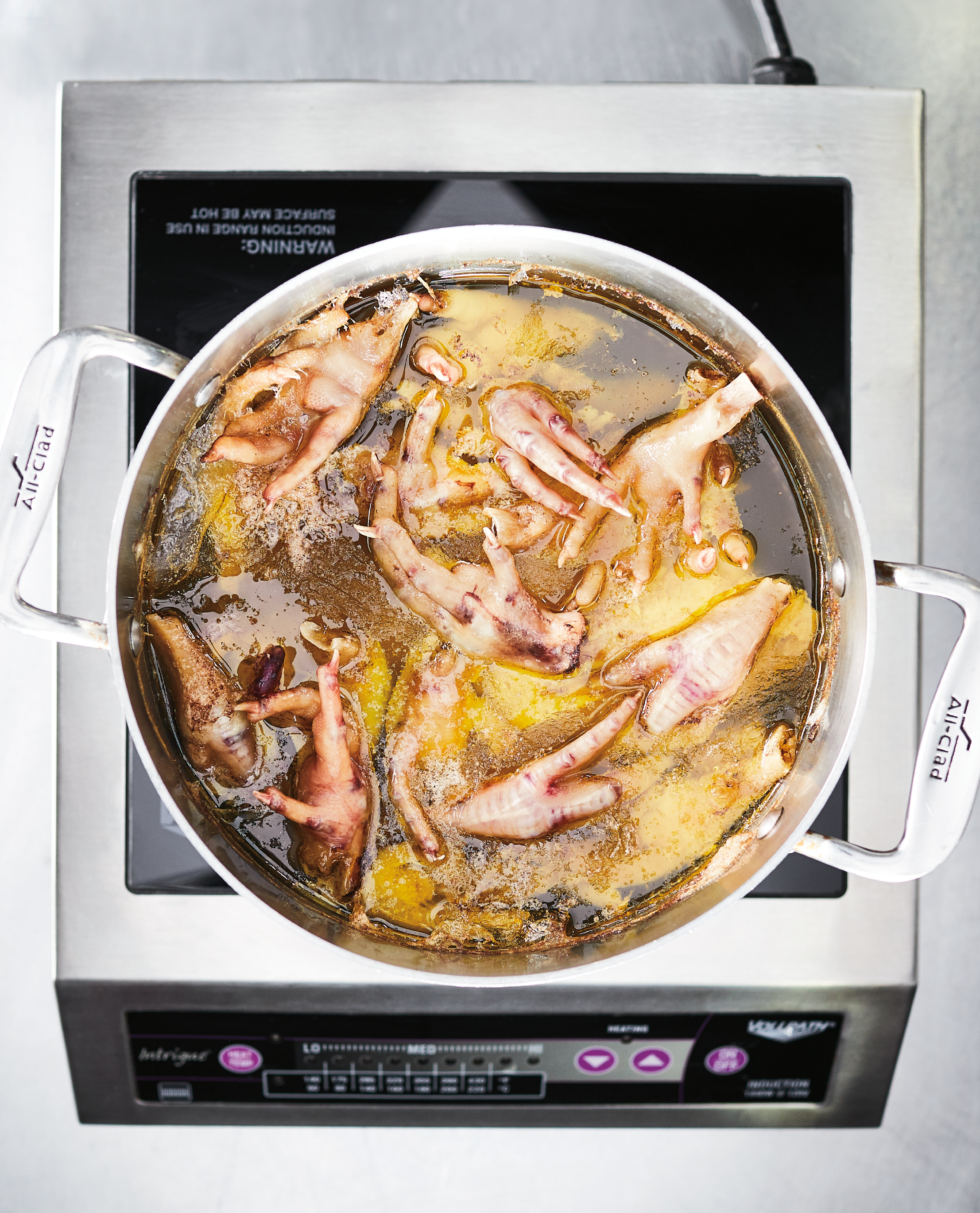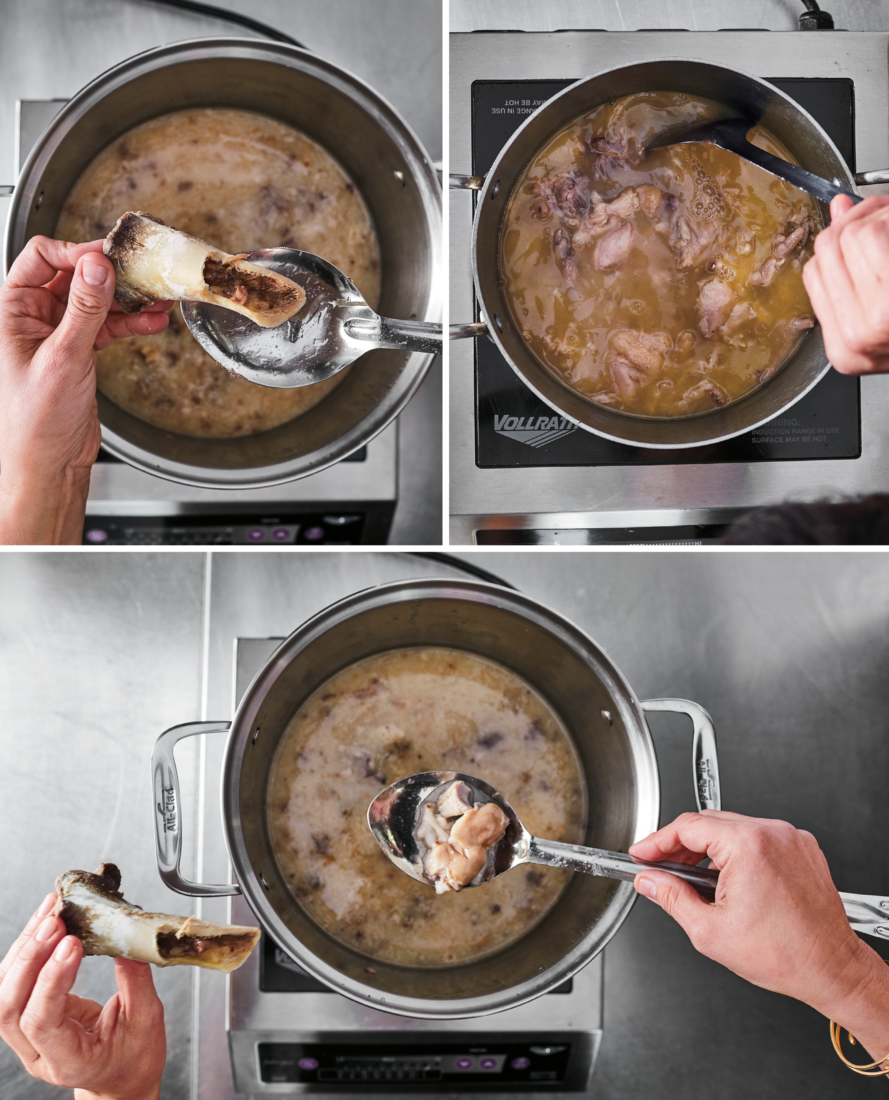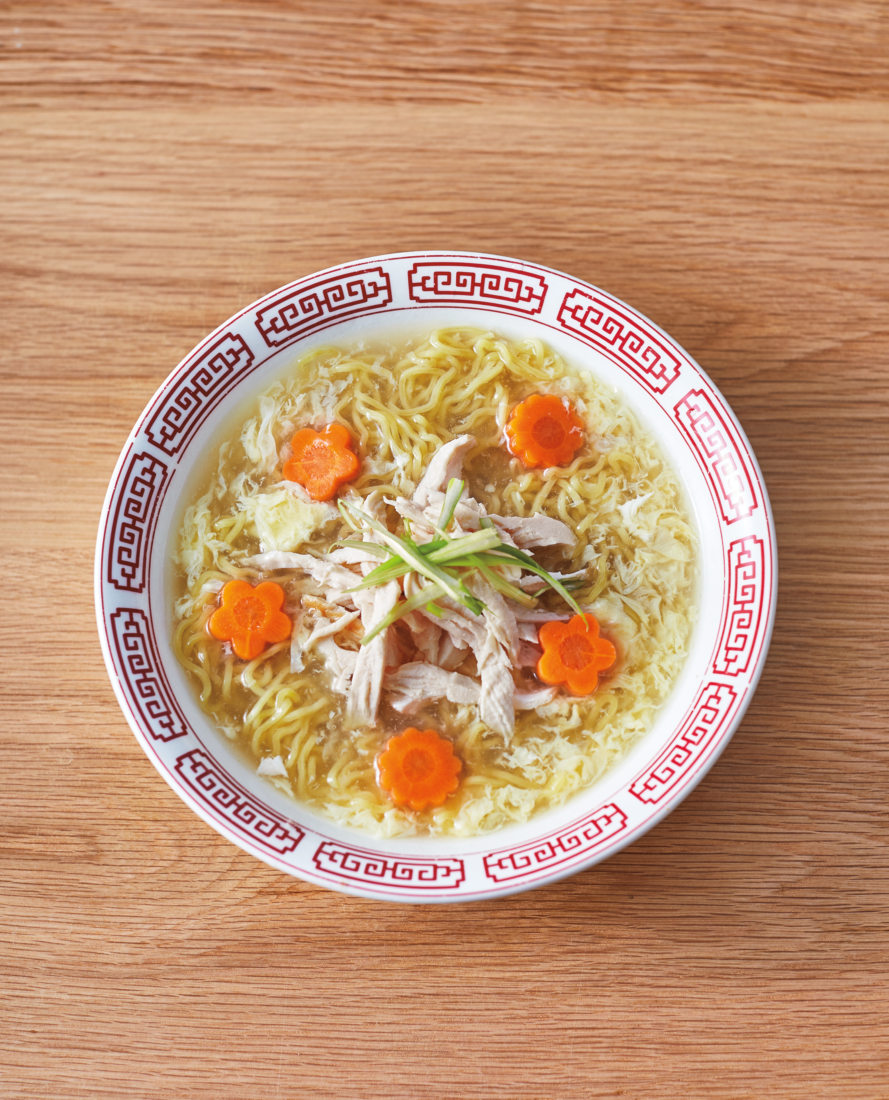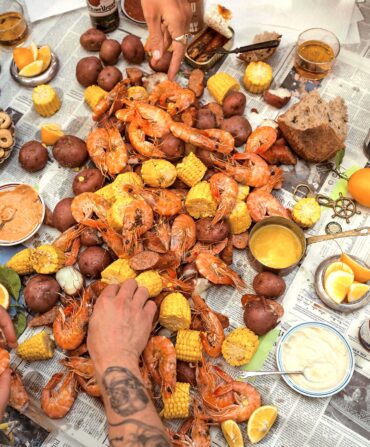Soup lovers, here is some simple encouragement: “Go buy some bones, carve out a few hours, get in the kitchen, and give making homemade stock a go,” says Sarah Gavigan, who recently opened Bar Otaku, a Japanese Izakaya (a.k.a. a pub) in Nashville, and is the author of the recently released cookbook, Ramen Otaku: Mastering Ramen at Home. Consider your first tries experiments, not party tricks: “Don’t invite nine people over the next night,” Gavigan says. “The first few times, make it personal—just you and the stock.” If you’ve got patience, bones, and a will to experiment, try these tips from Gavigan and other Southern culinarians.
For poultry, you need time and maybe feet.
Fat is flavor, so get the fattiest chicken you can find. “You use everything on a chicken because you’re trying to extract the chickeniest-chicken flavor you can,” Gavigan says. To make stock, she blanches chicken feet, which are full of thickening collagen, and can be purchased at many Asian food markets and butchers, before adding them to a pot full of meat. She covers the chicken parts, including skin and bones, with the chicken feet before adding water, raising the heat slowly, and keeping the temperature at around 190 degrees for a low bubble for hours. “When it comes to making a chicken stock, oxygen is not your friend,” she says. “The fat forms a skin that seals the pot.”

photo: emily dorio
Hunters have a natural advantage when it comes to making stocks—they’re likely to have a freezer full of helpful ingredients. Outdoorsman Wade Truong, the executive chef of Kybecca in Fredericksburg, Virginia, wrapped up a successful duck season, which means he’s been making this pastrami and freezing birds for use throughout the year. “I use duck and goose feet to add collagen to stocks and broths to give them more body,” he says. First, he scrubs feet with a plastic brush, then busts them up with a meat cleaver to expose bone and tendons. Truong adds the feet to a pot of bones and spices and simmers it all on low overnight. “The seasoning depends on what the end dish will be,” he says. “I make a lot of traditional French broth with mirepoix and herbs for general use. For pho, I use ginger and onions.”
For pork and beef stock, clean bones are key.
When Gavigan works with pork bones for the rich, savory broth she uses as the basis of many ramen noodle dishes, she extracts the marrow and collagen by rapidly boiling them. Thicker and heavier pork and beef bones require a more aggressive boiling process than chicken parts to break down all the delicious marrow and collagen. And the fat in pork and beef broths comes solely from bones, not meat and skin. Over time and through many failed experiments, she learned about the importance of boiling clean bones, which she purchases from her local butcher, Porter Road in Nashville. “You don’t want meat on the bones, because it will just give your broth or stock a dirty color,” she says. “Ask your local butcher for clean femur bones with a circular cut so you can see the marrow.”

Photo: Emily Dorio
Pork broth.
Mushrooms stand on their own.
Timothy Pakron, whose new cookbook Mississippi Vegan honors the roots of Southern cooking’s connection to vegetables, shares a flavorful broth built on mushrooms rather than meat—and it could not be simpler. He pours boiling water over dried shiitake mushrooms and lets it all soak together. Drying mushrooms concentrates the glutamate they contain, which heightens their umami, and that savory quality carries over when the mushrooms are rehydrated. “Mushroom broth has an elevated flavor profile compared to just vegetable broth,” Pakron says. “It has much more of a leg to stand on when being compared to chicken or beef stock.” It’s also the basis of his sweet onion soup, a warming balm on a cold day.

Timothy Pakron








